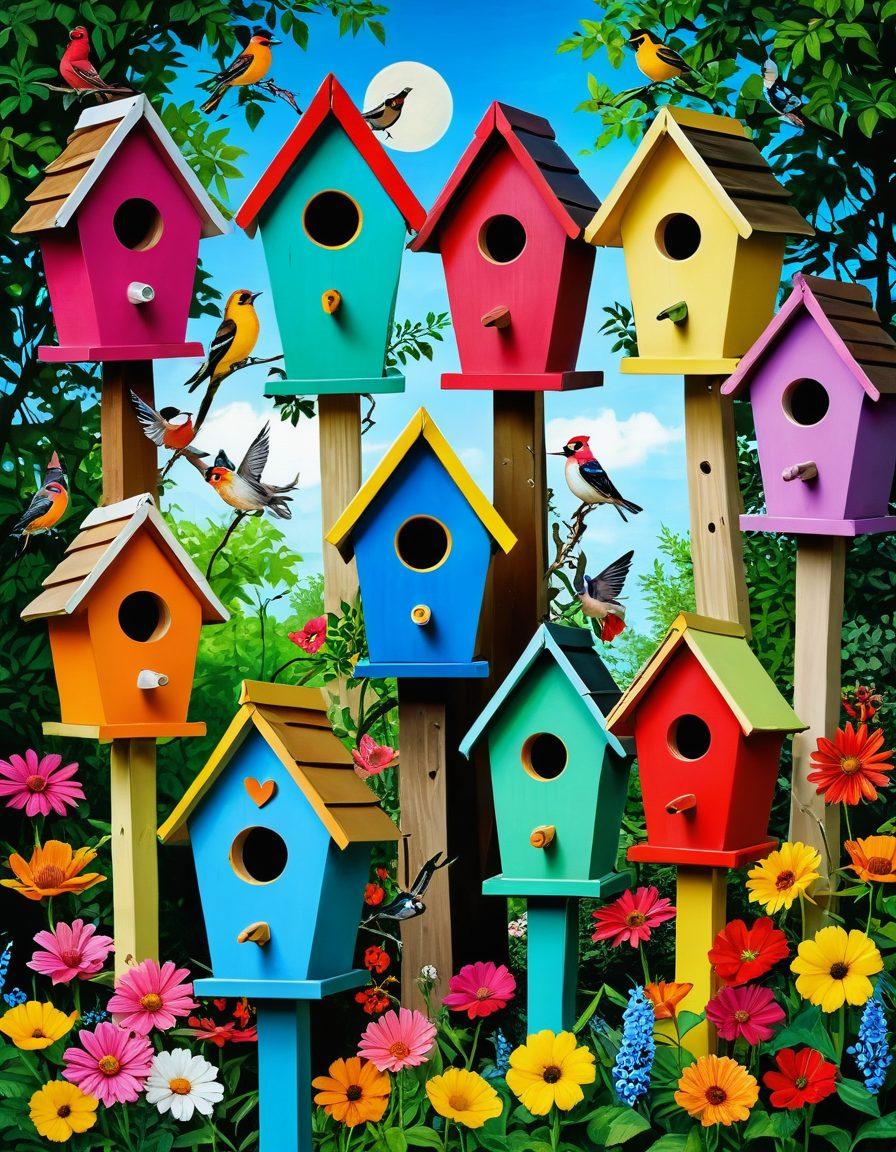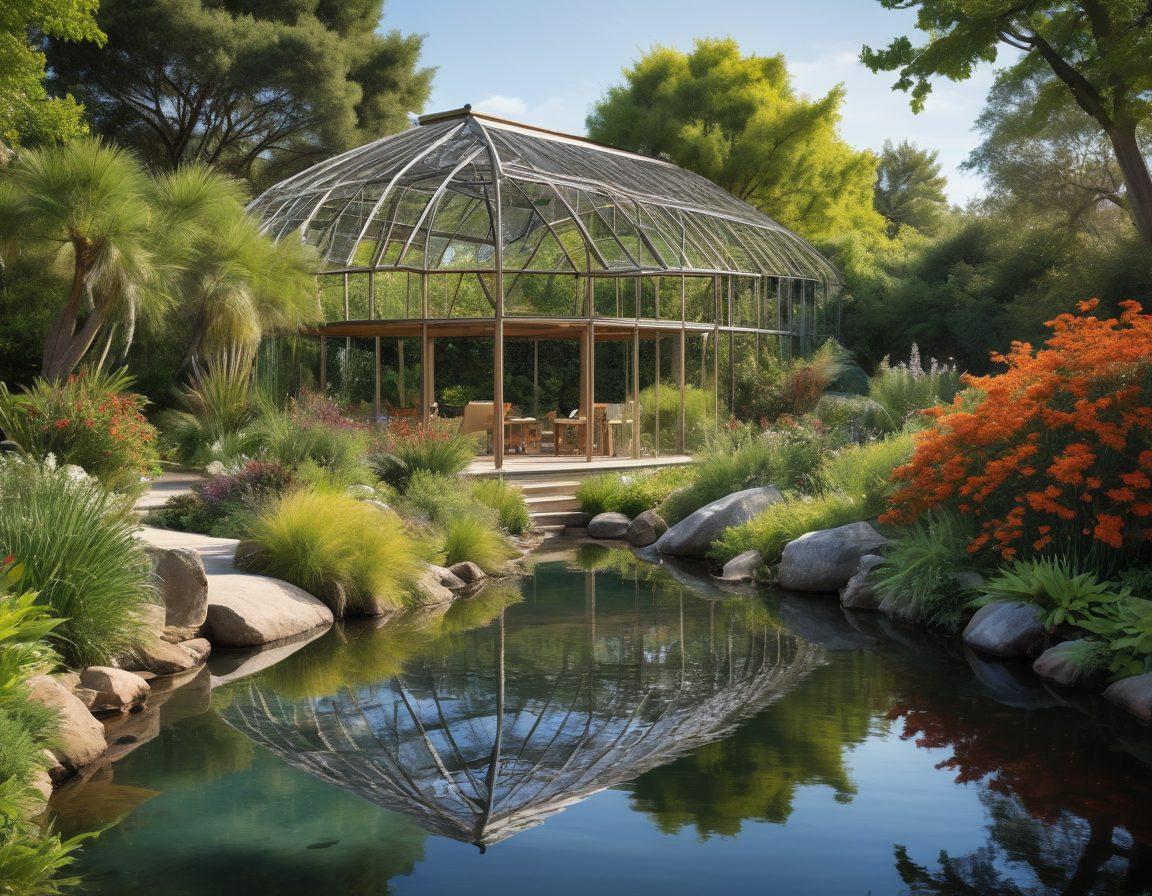Creating the Perfect Avian Environment: Designing Birdhouses and Flight Spaces for Your Feathered Friends
When it comes to creating the perfect avian environment, designing cozy retreats for our feathered friends is paramount. Imagine watching a mother bird gather twigs and leaves to craft her nest inside a snug little birdhouse you built with your own hands. These charming domiciles not only provide shelter but also promote nesting and comfort for various species. But how do we ensure that these birdhouses are truly inviting and functional, transforming into the ideal wildlife sanctuaries and bird conservation areas?
Designing a birdhouse can be an enchanting yet challenging experience, much like crafting a sanctuary for our feathered companions. The first step is to consider the specific needs of the birds you wish to attract. What materials will they find cozy? What dimensions will ensure their safety? By diving deep into the nuances of avian habitats, we can create ornithological spaces that are not just functional but also aesthetically pleasing. Choosing natural woods like cedar or pine not only adds character to your birdhouses but also invites birds to make them their own. Remember, the goal is to create delightful flying zones where birds can flourish and feel secure.
As you embark on this venture, keep in mind the importance of ventilation and drainage. Birds require a breathable environment to thrive, particularly when they are brooding and caring for their young. Think of your birdhouses as cozy retreats that reduce stress and promote happiness. Incorporating features like small holes for drainage and ample space for airflow can make all the difference in your feathered regions. Plus, doesn’t it feel rewarding to know you’re contributing to their comfort?
Once you have designed the structure, consider its placement in your yard or garden. A birdhouse should ideally be set up in a serene location, away from potential predators and disturbances. Think of how birds prefer to settle in their aerial habitats away from noise and towering competition. Perhaps near a flowering shrub or a tall tree where they can explore and feel safe. This mindfulness in placement transforms your yard into a sanctuary where birdwatching becomes an immersive experience, allowing you to witness the beauty of life unfolding right before your eyes.
Lastly, let’s not forget about maintenance! Regularly checking and cleaning your birdhouses not only ensures their longevity but also supports the well-being of the birds that inhabit them. Removing old nesting materials and ensuring the structure is intact is crucial for ongoing attraction. By nurturing these winged shelters, you become an ally in bird conservation efforts, providing safe havens for future generations of birds to come. So, grab your tools, gather your materials, and start building—your feathered friends are waiting!
Elevating Flight: Creating Open Spaces for Avian Freedom and Joy
Have you ever watched a bird soar freely through the sky? That effortless flight, those elegant movements, and that unmistakable sense of joy can inspire anyone. Creating avian environments that foster such freedom and joy can transform your outdoor space into a vibrant sanctuary for feathered friends. By designing thoughtful flight spaces, birdhouses, and nesting sites, you not only enhance the beauty of your garden but also contribute to bird conservation areas. Imagine your backyard as a haven for wildlife, where chirps and flutters fill the air, and every corner celebrates nature’s wonders!
Building aerial habitats like aviaries and flying zones is essential for the well-being of birds and providing them with an enriching experience. Birds are social creatures, and their habitats should reflect their needs for flight, nesting, and companionship. An ornithological space can include a variety of flight features—like perches, open areas for soaring, and sheltered spots that mimic natural environments. When you create these dynamic spaces, you’re not just crafting a birdhouse; you’re cultivating a sanctuary where birds can play, rest, and thrive. What unforgettable moments might you witness as your feathered guests explore their new home?
Consider the importance of the design and location of your birdhouses. Strategic placement can either make or break the success of your bird habitats. Positioning your winged shelters in the right spots—such as near trees or shrubs—enhances their accessibility and safety from predators. Incorporate elements like bird feeders and water sources nearby to attract a variety of species, turning your space into a buzzing birdwatching spot! Have you thought about what local birds might fancy your backyard?
Creating open spaces for avian freedom not only speaks to conservation but also offers incredible opportunities for enjoyment and education. Imagine gathering friends and family to marvel at the beauty of the great outdoors while witnessing birds in their natural behaviors. You could host birdwatching sessions and include educational aspects about different species that reside within your area. What an incredible way to connect with nature and inspire awe in both children and adults!
Lastly, let's talk about maintenance. Keeping your flight spaces, nesting sites, and birdhouses clean and secure will ensure that your avian environments remain healthy and inviting for your feathered friends. Regularly checking the structures and ensuring they are safe from harsh weather or potential predators is crucial. Incorporate native plants nearby to enhance the ecosystem further. After considering all this, imagine the sense of accomplishment you'll feel when a family of birds settles into your soaring sites. Creating spaces where they can thrive is not just an act of caring for wildlife; it's a tribute to the beauty of life's interconnectedness. So what are you waiting for? Start designing your own bird habitats today!
Building Bird Conservation Areas: A Guide to Sustainable Aviaries and Wildlife Sanctuaries
Imagine waking up to the sweet sound of chirping birds just outside your window, a symphony of life celebrating the dawn of a new day. Creating bird conservation areas is not just about building structures; it’s about constructing a haven that invites our feathered friends to thrive. By designing aviaries and wildlife sanctuaries that cater to their needs, we can enhance avian environments and create harmonious living spaces where resilience meets beauty. So, where do we start when crafting these enchanted realms for our winged companions?
First, let’s explore the concept of birdhouses and nesting sites. Have you ever pondered what makes a birdhouse truly appealing to its potential inhabitants? The secret lies in understanding the diverse needs of different species. From the compact homes of chickadees to the intricate nests of swallows, providing the right birdhouses is key. Each type of bird has specific requirements, from entrance hole size to nesting materials, and knowledge about these can make all the difference. As the saying goes, "Home is where the heart is," and in this case, it could be where the eggs are laid too!
Next up are the flight spaces and soaring sites. Every bird deserves the luxury of freedom and the room to spread its wings. Imagine the joy of creating aerial habitats filled with tall trees, shrubs, and open skies that encourage active flight. These flying zones not only benefit birds but also enhance the overall aesthetic of your garden or park. Picture a warm summer afternoon filled with the sight of sparrows darting through your carefully designed ornithological spaces. If you’re wondering how to create these inviting areas, think about incorporating tiered structures with varying heights, and don’t forget about food sources to lure them in.
Another aspect to consider is the impact of wildlife sanctuaries on local ecosystems. By dedicating spaces to protect these foundation species, we enrich biodiversity and promote a balanced environment. Have you ever thought about establishing a small sanctuary in your backyard or community? Even a modest space can act as a refuge for birds and other wildlife, transforming ordinary plots into vibrant bird habitats. Imagine a local park buzzing with life again, where families can gather to enjoy birdwatching spots teeming with action. What better way to connect with nature and appreciate its wonders?
Finally, it’s important to remember that building bird conservation areas is not only an activity but a commitment to sustainability. Each effort we make to build winged shelters contributes to the long-term health of our bird populations. So, how can you start making a difference today? Start by conducting a small inventory of your local bird species and their specific needs, and then rapidly translate that knowledge into action. From designing well-suited birdhouses to creating flourishing flight spaces, every step counts. Let’s work together to nurture these feathered regions so that they flourish for generations to come.


